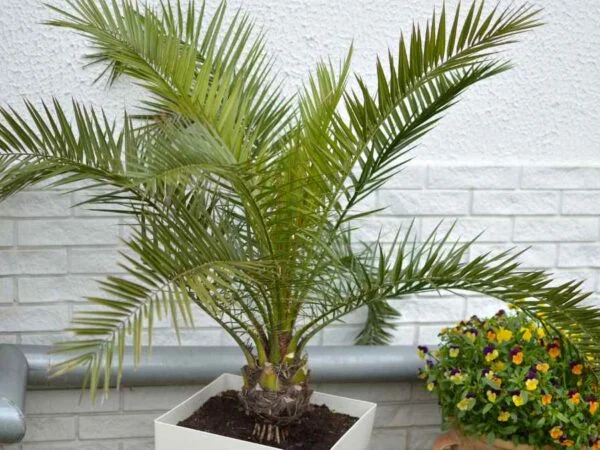Discover the fascinating world of coconut palms - these towering icons of tropical beaches offer more than just a picturesque backdrop. While their swaying fronds evoke relaxation and paradise, coconut palms play a crucial role in ecosystems and provide a plethora of practical uses. From providing shade on sun-drenched shores to yielding versatile coconuts packed with nutrients, these tropical palms are nature's multitaskers. Uncover the secrets behind their resilience in challenging coastal environments and learn how they contribute to sustainable living practices worldwide.
Understanding Coconut Palms
Key Characteristics
Coconut palms are known for their tall and graceful stature, with long and feather-like leaves that sway gently in the breeze. The trunks of coconut palms are smooth and slender, topped by a cluster of nutritious coconuts. These trees play a vital role in coastal ecosystems, providing shelter and food for various species.
Global Distribution
Across the globe, coconut palms thrive in tropical regions characterized by warm, humid climates, and abundant sunshine. They are native to regions such as Southeast Asia, the Pacific Islands, and parts of Africa. Due to their adaptability, they have been introduced to many other tropical areas worldwide.
Economic Significance
The economic significance of coconut palms cannot be overstated. These trees provide a multitude of products that contribute to the livelihoods of millions of people. From nutrient-rich coconuts that yield oil, milk, and meat to the versatile coconut palm wood used in construction and crafts, every part of the tree serves a purpose.
The coconut palm tree is a symbol of resilience and sustainability. Its ability to thrive in harsh coastal conditions makes it a valuable asset for communities living in these areas. The abundant coconut palms not only offer sustenance but also serve as a source of income through the sale of coconuts and related products.
Physical Features and Taxonomy
Physical Features
Coconut palms, commonly found in natural areas near coastal regions, can grow up to 100 feet tall. The palm's trunk is slender, topped with a crown of large feathery leaves. The coconut itself is encased in a hard shell, protected by a fibrous husk.
Taxonomy
Belonging to the Arecaceae family, coconut palms are scientifically known as Cocos nucifera. This species falls under the genus Cocos, which comprises around 15 different types of palms. The classification of coconut palms showcases their unique characteristics and evolutionary history.
Predicted Invasiveness in South Florida
The IFAS assessment conducted on coconut palms indicates that they have the potential to become invasive in South Florida due to their adaptability to various environmental conditions. With optimal temperatures and light, these palms can thrive and spread rapidly across different areas.
Roots and Inflorescence Explained
Root System
Coconut palms have a unique root system that consists of a fibrous network close to the surface. These roots help the tree anchor itself securely in sandy soils, preventing it from being uprooted by strong winds. The shallow root system also allows the tree to absorb moisture efficiently from the topsoil.
Flowering Process
The flowering process of coconut palms is a fascinating phenomenon. It typically takes around six to ten years for a coconut palm to mature enough to produce flowers. Once mature, the tree produces an inflorescence that emerges from the top of the tree's canopy. This inflorescence contains both male and female flowers, allowing for cross-pollination.
Structure of Fruits and Husks
Coconuts are known for their versatile uses, with every part of the fruit being utilized in some way. The coconut fruit itself is made up of several layers - the exocarp, which is the outer green layer, the mesocarp, which is the fibrous husk, and the endocarp, which surrounds the actual seed or nut. The husk, often used for various products like ropes and mats, protects the inner seed until it is ready to germinate.
Cultivation Steps
Planting Requirements
Coconut palms thrive in tropical climates, requiring temperatures above 72 degrees Fahrenheit and plenty of sunlight. They prefer well-draining soil to prevent waterlogging.
To plant a coconut palm, choose a sunny spot with enough space for the tree to grow tall. Dig a hole twice as wide and deep as the root ball to accommodate the layer of roots.
Coconut palms do well in sandy soil, but you can improve the soil's fertility by adding organic matter like compost or manure to the planting hole.
Essential Cultivation Steps
- Select suitable cultivars for your climate. Popular varieties include Malayan Dwarf and Fiji Dwarf, known for their high yield and disease resistance.
- After planting, water the palm regularly, ensuring the soil remains moist but not waterlogged.
- Fertilize the tree with a balanced fertilizer every three months to promote healthy growth.
- Prune dead fronds and any inflorescences that have finished fruiting to maintain the tree's health and appearance.
Timeline for Full Production
Coconut palms are slow growers, taking around 6-10 years to reach full production. However, once mature, a single tree can produce up to 50 coconuts per year.
It's essential to be patient during the initial years of cultivation while the tree establishes its root system and begins producing fruit.
Planting and Ongoing Care
Ideal Conditions
To plant coconut palms successfully, ensure they are in warm climates with temperatures above 70 degrees Fahrenheit. Coconut palms thrive in sandy, well-draining soils with high organic content. Plant them in areas with full sun exposure to promote healthy growth.
Coconut palms are native plants to tropical regions and require high humidity levels for optimal growth. Avoid planting them in areas prone to flooding to prevent waterlogged roots, which can lead to root rot.
Watering Needs
Water newly planted coconut palms frequently to establish a strong root system. Once established, water the palms regularly, providing around 1-1.5 inches of water per week. Adjust watering frequency based on soil moisture levels to prevent overwatering or underwatering.
During dry periods, increase watering frequency to maintain adequate soil moisture levels. Monitor the ground moisture by checking the top few inches of soil - if it feels dry, it's time to water the coconut palms.
Mulch and Fertilizer Application
Applying mulch around coconut palms helps retain soil moisture, suppresses weed growth, and provides essential nutrients as it breaks down. Use organic mulches such as shredded leaves or bark chips and replenish them regularly to maintain a 2-3 inch layer.
Fertilize coconut palms with a balanced fertilizer containing essential nutrients like nitrogen, phosphorus, and potassium. Apply fertilizer three times a year during the growing season, following the manufacturer's instructions for proper product application.
Incorporate compost into the soil annually to improve soil fertility and provide additional nutrients for the coconut palms. Compost enriches the ground, promoting healthy growth and robust fruit production.
Tackling Diseases and Pests
Common Diseases
Coconut palms are susceptible to various diseases that can significantly impact their health. One common issue is lethal yellowing, a disease caused by a phytoplasma that affects the tree's vascular system. This disease leads to the yellowing of leaves, eventually causing the death of the palm.
Another prevalent disease is coconut root (bud) rot, which is often caused by a fungus. This disease typically manifests as wilting leaves and a general decline in the overall health of the palm. Proper identification and swift action are crucial in managing these diseases effectively.
Pest Management Strategies
Effective pest management is essential for maintaining the health of coconut palms. One approach is to regularly inspect the trees for any signs of pest infestation. If detected, contacting an IFAS extension agent can provide valuable information on appropriate treatment methods.
Pruning infected fronds and removing any affected parts can help control pest populations. Using biological control agents can be an environmentally friendly way to manage pests without harming beneficial organisms.
Preventing Nutrient Deficiencies
Nutrient deficiencies can weaken coconut palms, making them more vulnerable to diseases and pests. To prevent this, it is crucial to ensure that the soil around the palms is rich in essential nutrients such as nitrogen, potassium, and magnesium.
Regularly applying fertilizers specifically formulated for coconut palms can help maintain optimal nutrient levels. Monitoring the growth of the palms and adjusting the fertilization schedule accordingly can prevent deficiencies and promote healthy growth.
Harvesting Techniques
Harvesting Coconuts
Coconut palms are typically harvested throughout the year, with peak seasons varying depending on the region. Workers harvesting coconuts climb the tall trees or use specialized tools to reach the fruits. The harvesting process involves cutting the ripe coconuts from the tree, followed by removing the husk to reveal the familiar brown shell.
Annual Production
The annual production of coconut palms plays a significant role in various industries worldwide. Countries like Indonesia, the Philippines, and India are among the top producers of coconuts globally. The cultivation process requires specific conditions such as well-drained soil, tropical climate, and regular rainfall to thrive.
Cultivars of Coconut Palms
Different cultivars of coconut palms exist, each with unique characteristics suited for various purposes. For example, the 'Malayan Dwarf' cultivar is preferred for its shorter stature and high yield of coconuts. On the other hand, the 'Tall' cultivar is known for its robustness and ability to withstand strong winds and storms.
Culinary and Other Uses
Coconut Meat
Coconut meat is a versatile ingredient used in various culinary creations. Rich in flavor and texture, it is commonly found in desserts like coconut macaroons and coconut cream pies. It can be shredded and toasted to add a crunchy topping to dishes.
Coconut Oil
Known for its health benefits, coconut oil is widely used in cooking and baking as a healthier alternative to traditional oils. Its high smoke point makes it ideal for frying and sautéing, while its natural sweetness adds depth to both savory and sweet dishes. In cosmetics, coconut oil is a popular ingredient in skincare products due to its moisturizing properties.
Coir Fiber
Derived from the husks of coconut palms, coir fiber is a sustainable material with diverse applications. Highly durable and resistant to saltwater, it is commonly used to make ropes, doormats, and brushes. In gardening, coir fiber is an eco-friendly alternative to peat moss, used for soil conditioning and as a growing medium for plants.
Final Remarks
You've gained a comprehensive understanding of coconut palms, from their physical features and cultivation steps to harvesting techniques and culinary uses. By now, you're well-equipped to plant and care for coconut palms while tackling potential diseases and pests that may arise. The versatility of coconut palms offers a wide array of benefits, making them a valuable addition to your garden or agricultural endeavors.
Take the knowledge you've acquired and put it into practice. Start planting your coconut palms, follow the care guidelines diligently, and explore the various culinary and other uses they offer. Embrace the journey of cultivating these tropical wonders and enjoy the bountiful rewards they bring. Your coconut palm oasis awaits!
Frequently Asked Questions
What are the key physical features of Coconut Palms?
Coconut palms are characterized by tall, slender trunks with a crown of large, feathery leaves. They produce clusters of coconuts that have a hard shell and contain sweet, nutritious water and white flesh.
How can I effectively cultivate Coconut Palms?
To cultivate Coconut Palms successfully, ensure they are planted in well-draining soil, receive ample sunlight, and are watered regularly. Provide adequate spacing between trees for optimal growth and ensure proper fertilization.
What steps are involved in harvesting coconuts from Coconut Palms?
Harvesting coconuts involves climbing the tree or using specialized tools to cut down mature coconuts. Once harvested, the coconuts can be used for various purposes such as consuming the water, extracting the flesh, or processing the oil.
What are some common diseases and pests that affect Coconut Palms?
Coconut palms are susceptible to diseases like lethal yellowing and pests such as coconut mites and beetles. Regular inspection, timely treatment with appropriate pesticides, and maintaining overall tree health can help prevent and manage these issues.
How can Coconut Palms be utilized in culinary and other applications?
Coconut palms offer a versatile range of uses in cooking, beauty products, and crafts. The coconuts can be used to extract oil for cooking or skincare, make coconut milk for recipes, produce fibers for textiles, and create decorative items like utensils or ornaments.
Image Source: Paid image from CANVA




